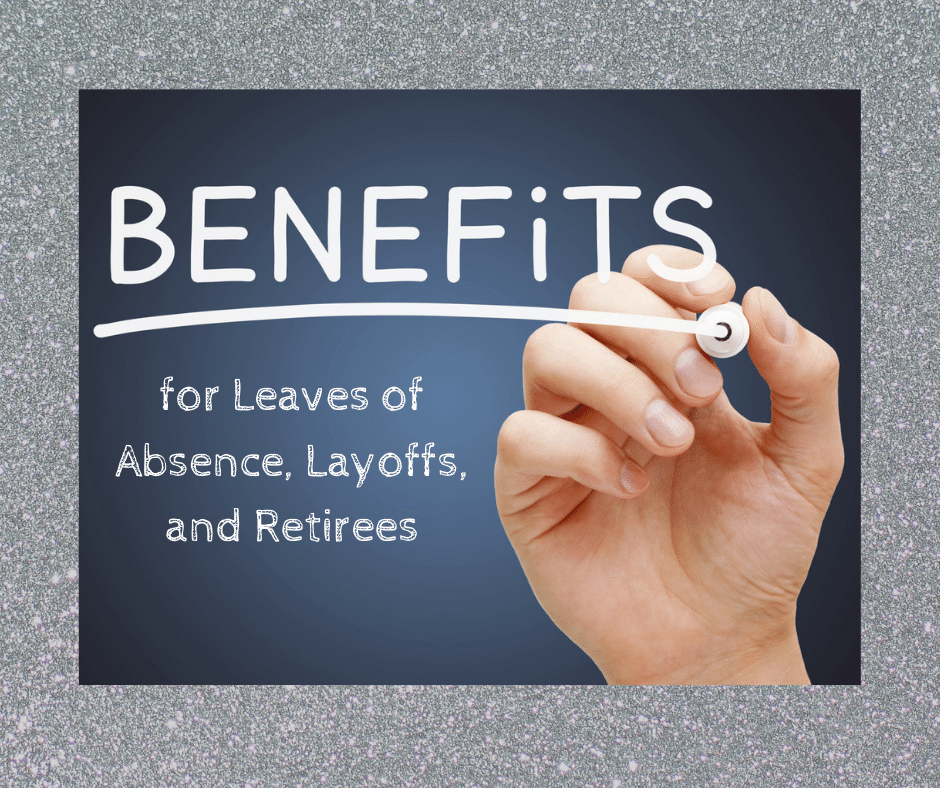When should your employees lose their benefits? Sometimes, it is only a temporary loss, and in other instances, it is permanent. Employers and employees can also decide to maintain benefits coverage with either a continuation of benefits or an extension. In Canada, we don’t have a federal healthcare plan; we have provincial coverage, and health benefit plans must conform to the labor codes of each province.
How are they different?
Continuation of Benefits and Extension of Benefits
Employees are covered by group insurance while a company employs them. If an employee chooses to leave the company, the employer will discontinue benefits upon the date of termination. However, if an employer has chosen to terminate an employee, they might choose to continue the benefits up to a specified date. The company may choose to pay for 100% of the Extended Health and Dental premiums OR they may give the employee the opportunity to pay for the coverage themselves. It is important to note that there is always a time limit after an employee leaves their employment for them to apply to the insurer to have their coverage continued.
Many employees rely on a group plan for all their insurance needs. A terminated employee, or one who chooses to leave the company, might also be entitled to convert group life insurance and critical illness to a private plan without having to undergo the medical examination which is often required for private coverage. The conversion privilege is a time-limited opportunity available to the terminated employee. The employer has an obligation to advise the employee of this opportunity at the time of termination. The main advantage of a “conversion” is if the employee has medical concerns, they might not qualify for critical illness or life insurance through the normal process of underwriting with another insurance company. However, they can convert their life and critical illness insurance without medical insurability providing them with lifelong coverage regardless of whether or not they secure new employment offering group benefits.
Leave of Absence Extensions
Employees request a leave of absence for a variety of reasons. Often it is health-related, pregnancy, child death or disappearance, a victim of a crime, or to study or travel. Sometimes, the employee requests a leave for a major surgery or organ transplant. If the procedure doesn’t go well, complications might result in that employee needing more time to recover, and to request an extension. Maternity leave is a job-protected leave in all provinces, and in Alberta , there is a difference between a 6 week “medical leave” and the remaining optional leave. After the 6 weeks “medical leave,” the employer has a choice of whether to cover for the maternity or paternity leave. The employer may choose to continue paying 100% of the Extended Health and Dental premiums OR may choose to offer the continued coverage to the employee if they agree to pay the premiums during their continued absence. Many leaves are not job-protected so the employer can fill the position with another employee.
Layoffs
Temporary and permanent layoffs have been common during the pandemic as businesses have had to close or partially close under restrictions. In the case of a temporary layoff, employees should be provided with a document from the employer stating the duration of the layoff. The employer is not obligated to continue to provide benefits to employees but should provide them with a Record of Employment. This enables them to apply for Employment Insurance.
Disability Insurance
When a disability causes an employee to be unable to work, there are two types of disability insurance, short term, and long term. The employer determines how long “long term” coverage for extended health and dental will continue and whether the employee will have the option to pay for the premiums when that length of time is up. Disability benefits help provide the financial and emotional support employees need to recover and come back to work.
What about Retirees?
Canadian employers have an opportunity to retain their most valuable employees up to retirement with a retirement plan. Meanwhile, Canadians are living longer which means their retirement savings need to last longer. This is placing pressure on defined benefit and defined contribution programs. Outside of Quebec, employers are not required to participate in any type of retirement plan for the benefit of their employees. Most employers fall under provincial authority which governs pension plan minimum standards.
Some companies will create a separate retirement plan for individuals 65 and up. Usually, these plans look similar to the ones they have come off of but have reduced benefits. They give retirees some coverage but not 100% of what they had as an employee, and these plans should be designed to integrate with any seniors’ provincial health care plan.
Health Risk Services urges employers to take into consideration all of these points when they are creating their benefits plans. We help our clients find the right benefits solutions for their employees while maintaining sustainability and retention of their valued employees.
We would like you to know more about how Health Risk Services can assist you with a 2022 plan to address the wide variety of benefit needs of your company, so please schedule a Complimentary Consultation with us.
At Health Risk Services we will Empathize, Educate, and Empower you and your team in 2021!
To schedule your Complimentary Consultation with Health Risk Services, please call 403-236-9430 OR email: [email protected]













